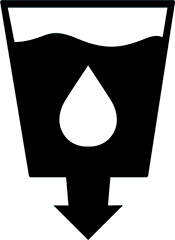UN Sustainable Development Goals Addressed
-

Goal 6: Clean Water & Sanitation
2020 Global Design Challenge Honorable Mention
This design concept was developed by participants in the Institute’s Global Design Challenge. The descriptions below are from the team’s competition entry materials.
Location: Colombia
Team members: Andrés Cardona, David Sánchez, Jennifer Balcucho, Joan Berrio, Sebastián Balcucho
Innovation Details
It is estimated that globally, the number of lakes with harmful algal blooms will increase by 20% by 2050, while more than 40% of the lakes and freshwater reservoirs in Latin America are in a eutrophic state. Mimicking the filtering functions of salps and devil rays, Eutrolife is a modular system, designed to treat eutrophic water bodies by filtering surface water and redistributing excess nutrients.
What is the problem you are trying to solve and how is it related to the united nations sustainable development goals?
We decided that for our idea we wanted to achieve filtering and redistribution. When looking for inspiration in nature we came across the Salpas, organisms that act like a colony formed by many individuals. Each individual has the ability to filter through a mucus mesh the food particles. In addition, they have the ability to form rapidly sinking pellets that redistribute nutrients such as carbon to the deeper layers. Finally, we incorporate the filtration mechanism of Devil Rays in which the smaller particles pass through a few pores and the larger ones are pulled by a tangential force.
What organisms/natural systems did you learn from and how did what you learned inform your design?
We decided that for our idea we wanted to achieve filtering and redistribution. When looking for inspiration in nature we came across the Salpas, organisms that act like a colony formed by many individuals. Each individual has the ability to filter through a mucus mesh the food particles. In addition, they have the ability to form rapidly sinking pellets that redistribute nutrients such as carbon to the deeper layers. Finally, we incorporate the filtration mechanism of Devil Rays in which the smaller particles pass through a few pores and the larger ones are pulled by a tangential force.
What does your design solution do? How does it address the problem or opportunity you selected?
First, the water flow will pass through the 3D filter inspired by the Devil Rays, removing the larger aggregates that will be directed to a storage compartment, identified by green. The dissolved nutrients and smaller particles will then pass through to a second filter made of biocompatible nanofibers generated by electrospinning, thus removing solid particles of nanosizes as the Salpas do. The dissolved nutrients will pass through this film and reach the immobilization. For this, the flow of water with nutrients will be combined with a first solution in a container, followed by drops falling into another compartment with a sieve at the bottom, obtaining the beads with the nutrients immobilized inside. Finally, through a mechanism activated by the wind movement, the beads are directed to a spiral tube for their release into the lake so that fish and other organisms can eat them. Our prototype is designed to work in clusters, optimizing the operation and performance, as do the Salpas. As for the initial storage and the second filter of nanofibers, these can be removed to give a second use and added value to the filtered biomass in interested industries.




